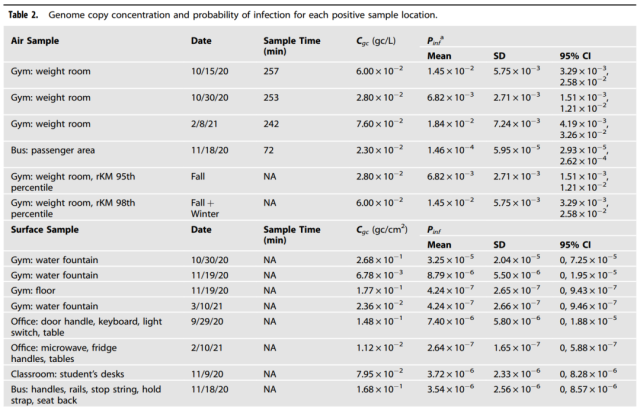The ability of new coronavirus to spread through the air is 1000 times more than through the surface of objects
- Normal Liver Cells Found to Promote Cancer Metastasis to the Liver
- Nearly 80% Complete Remission: Breakthrough in ADC Anti-Tumor Treatment
- Vaccination Against Common Diseases May Prevent Dementia!
- New Alzheimer’s Disease (AD) Diagnosis and Staging Criteria
- Breakthrough in Alzheimer’s Disease: New Nasal Spray Halts Cognitive Decline by Targeting Toxic Protein
- Can the Tap Water at the Paris Olympics be Drunk Directly?
The ability of new coronavirus to spread through the air is 1000 times more than through the surface of objects
- Should China be held legally responsible for the US’s $18 trillion COVID losses?
- CT Radiation Exposure Linked to Blood Cancer in Children and Adolescents
- FDA has mandated a top-level black box warning for all marketed CAR-T therapies
- Can people with high blood pressure eat peanuts?
- What is the difference between dopamine and dobutamine?
- How long can the patient live after heart stent surgery?
The ability of new coronavirus to spread through the air is 1000 times more than through the surface of objects.
On March 11, 2020, the World Health Organization (WHO) declared a global pandemic of COVID-19 caused by the novel coronavirus (SARS-CoV-2) .
It has been more than two years now, and the COVID-19 is still spreading widely around the world.
The modes of transmission of the new coronavirus can be classified as inhalation of virus particles, deposition of virus on mucous membranes, and contact of mucous membranes with virus-contaminated hands.
Therefore, mask wearing, social distancing, and close contact tracing/isolation are key preventive measures to control the Covid-19 outbreak until the majority of the population becomes immune through vaccination or through infection.
Previous studies have shown the potential for the new coronavirus to spread through the air or surfaces near an infected person.
The new coronavirus carried by infected people can remain in aerosols and survive for several hours through breathing, and can survive for up to 3 days on surfaces (depending on environmental factors such as temperature, relative humidity and surface material) .
Therefore, assessing the possibility of the spread of the new coronavirus through aerosols or surfaces is crucial for controlling the novel coronavirus and formulating relevant measures.
Recently, researchers from the School of Public Health of the University of Michigan published a research titled: Monitoring SARS-CoV-2 in air and on surfaces and estimating infection risk in buildings and buses on a university campus in the Journal of Exposure Science & Environmental Epidemiology paper.
The study sampled and tested the air and surfaces of several university campuses and surrounding sites to assess the probability of COVID-19 transmission related to environmental exposure, in combination with the campus’s COVID-19 infection.
The results of the assessment showed that the probability of infection after exposure to new coronavirus particles in the air was approximately 1 per 100 exposures .
The probability of infection after contact with a surface that is positive for the new coronavirus is very low, with only 1 infection per 100,000 contacts .
This prompts us to pay more attention to the risk of inhaling the new coronavirus through the air, rather than the risk of infection from touching surfaces, especially those in regularly cleaned environments .

Specifically, the research team collected 256 air samples, of which 1.6% tested positive for the new coronavirus. More than 517 surface samples were collected, and 1.4% were positive.
The samples came from the offices, classrooms, performance spaces, cafeterias, buses and gyms. Among them, the most dangerous environment is the gym , where 75% of the air samples and 50% of the surface samples collected in the gym were found to be positive for the new coronavirus .
Most of the contaminated gym surfaces involved water cooler buttons , but no positives were found in samples taken on fitness equipment.
Overall, far fewer positives were found around office spaces, computer keyboards, light switches, tabletops, microwaves, refrigerator handles or desks.
After comparing the positive samples with actual COVID-19 cases on campus, the team determined that the probability of infection following exposure to airborne COVID-19 particles was approximately 1 infection per 100 exposures .
The probability of infection after contact with a surface that is positive for the new coronavirus is very low, with only 1 infection per 100,000 contacts .
The results of this study show that the risk of contracting the new coronavirus through air inhalation is much higher, about 1,000 times higher, than touching surfaces such as doorknobs, drinking fountains, keyboards, tables, switches, etc.


This study also reminds us that more attention should be paid to the risk of inhaling the new coronavirus through the air than to the risk of infection from touching surfaces, especially those in regularly cleaned environments .
For this study, Professor Elizabeth Scott from Simmons University said that more and more research shows that the COVID-19 is mainly transmitted through the air, which has also been confirmed by the WHO.
However, it should be pointed out that although the risk of surface transmission is low, in real life, people will repeatedly touch the same surface, so the risk of transmission will increase accordingly.
Reference :
https://www.nature.com/articles/s41370-022-00442-9
The ability of new coronavirus to spread through the air is 1,000 times more than through the surface of objects
(source:internet, reference only)
Disclaimer of medicaltrend.org
Important Note: The information provided is for informational purposes only and should not be considered as medical advice.



